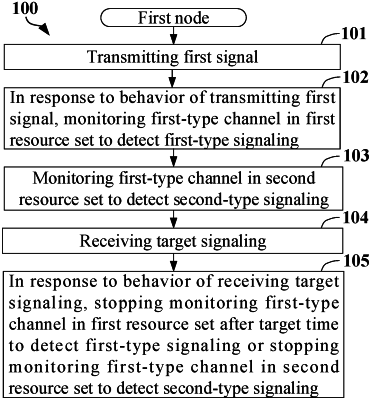| CPC H04L 5/0094 (2013.01) [H04L 5/0035 (2013.01); H04W 24/10 (2013.01); H04W 74/0833 (2013.01); H04B 7/0413 (2013.01); H04W 4/06 (2013.01)] | 20 Claims |

|
1. A first node for wireless communications, comprising:
a first transmitter, transmitting a first signal;
a first processor, in response to the behavior of transmitting the first signal, monitoring a first-type channel in a first resource set to detect a first-type signaling;
the first processor, monitoring the first-type channel in a second resource set to detect a second-type signaling;
the first processor, receiving a target signaling, the target signaling being used to determine a target time; and
the first processor, in response to the behavior of receiving the target signaling, stopping monitoring the first-type channel in the first resource set after the target time to detect the first-type signaling or stopping monitoring the first-type channel in the second resource set after the target time to detect the second-type signaling;
wherein the first signal is used for random access, and the first signal is used to determine a first reference signal; the first-type signaling is for unicast service, and the second-type signaling is for Point-To-Multipoint (PTM) or multicast service; for the first-type channel monitoring performed in the first resource set, the first node assumes Quasi-Co-Located (QCL) parameters same as the first reference signal; the target signaling is a third-type signaling or a fourth-type signaling; when the target signaling is a said third-type signaling, the first node stops monitoring the first-type channel in the first resource set after the target time to detect the first-type signaling; and when the target signaling is a said fourth-type signaling, the first node stops monitoring the first-type channel in the second resource set after the target time to detect the second-type signaling.
|